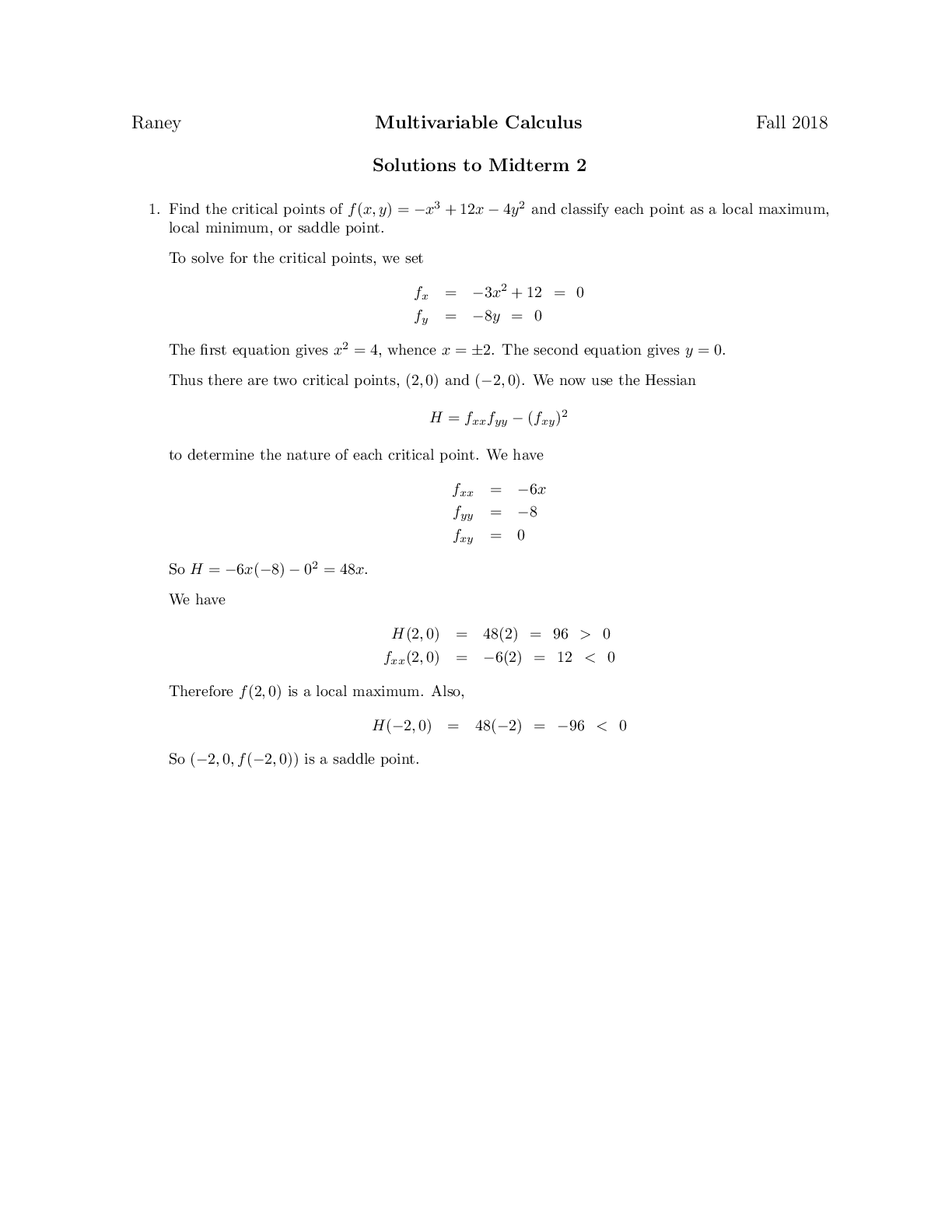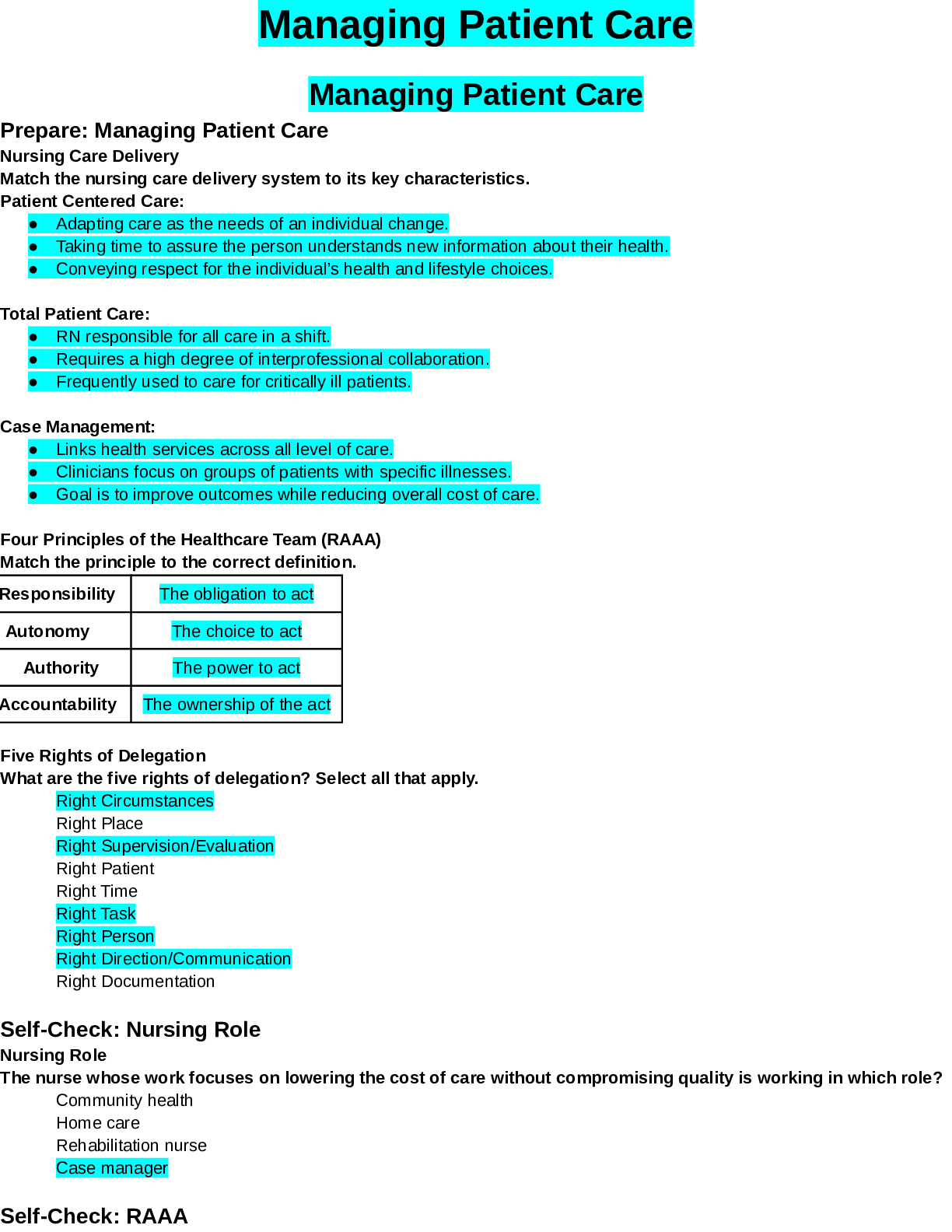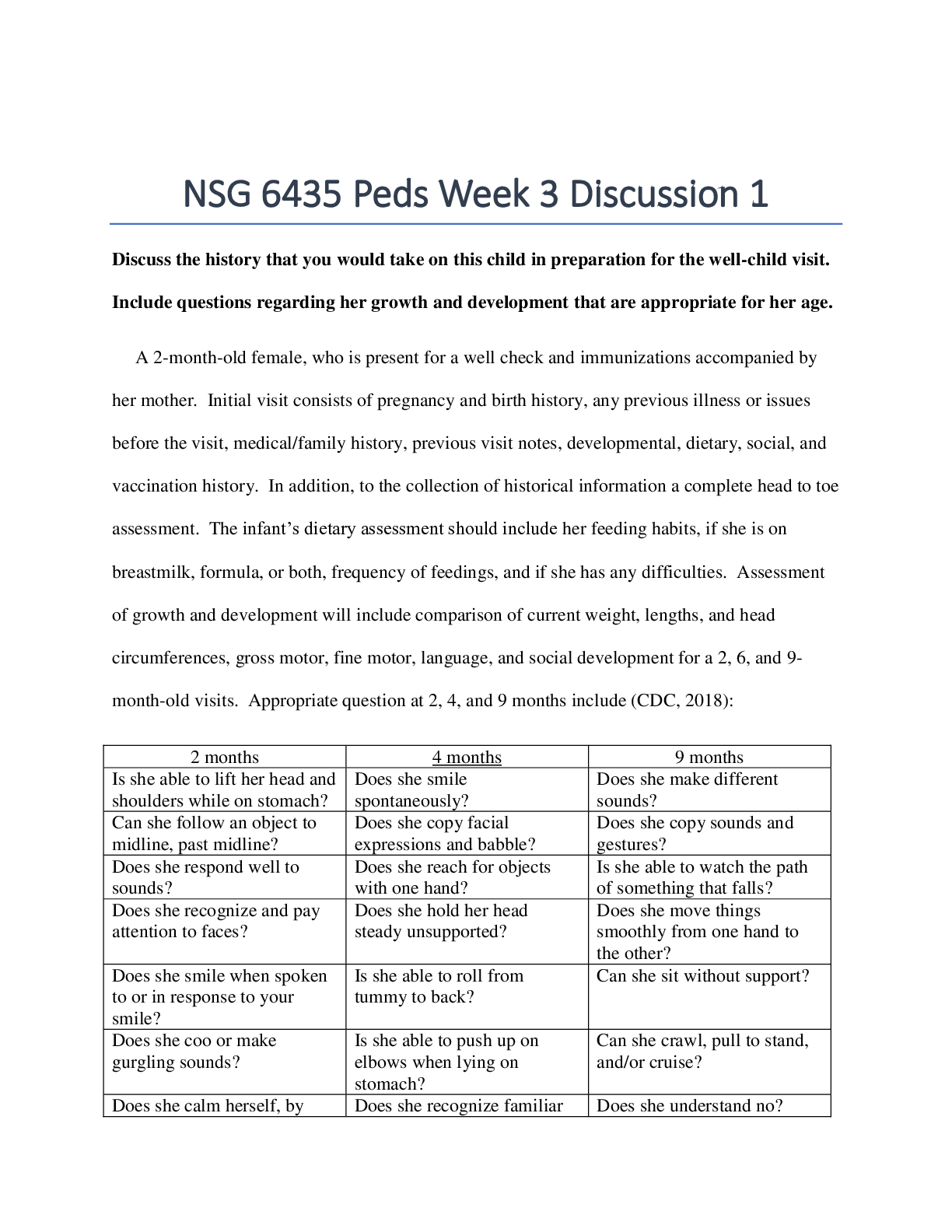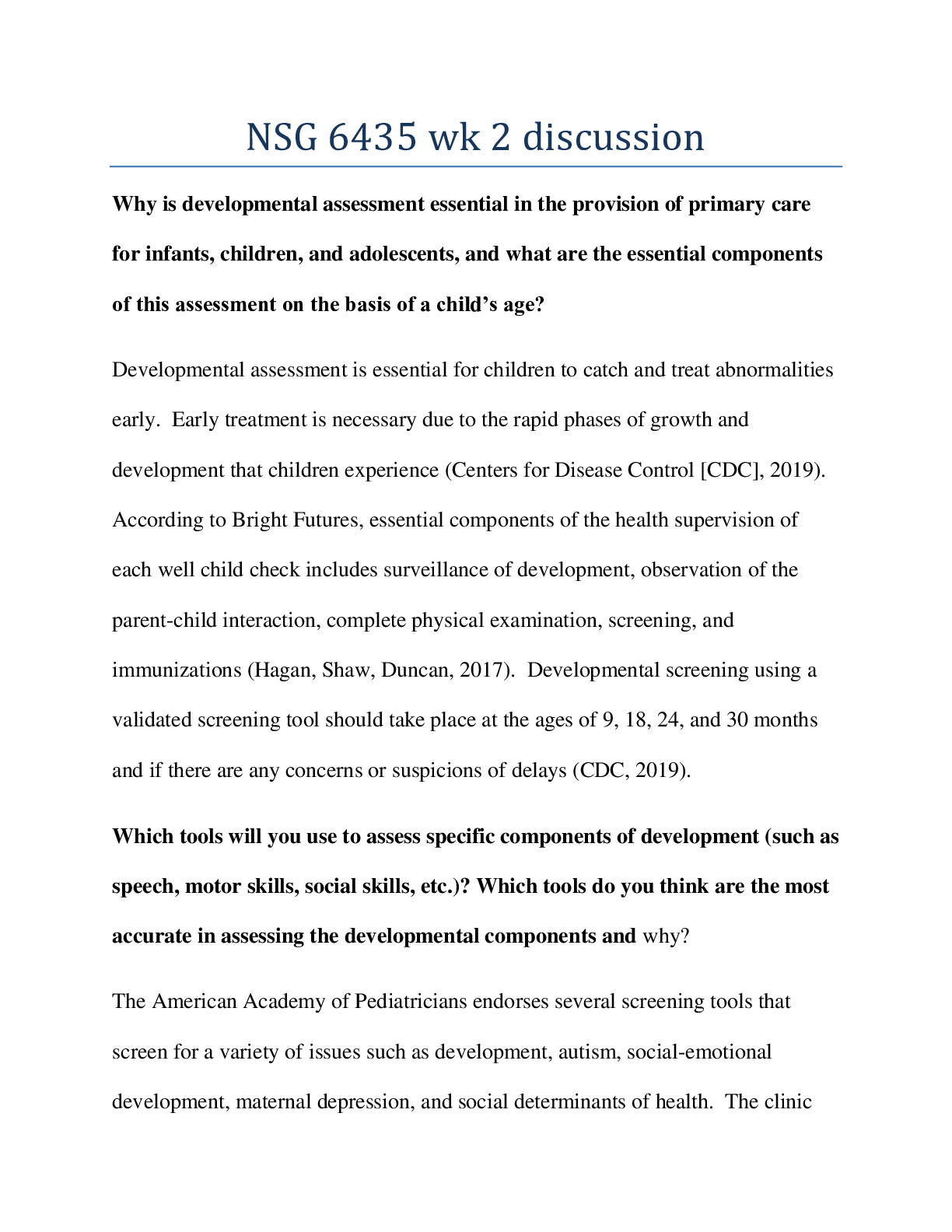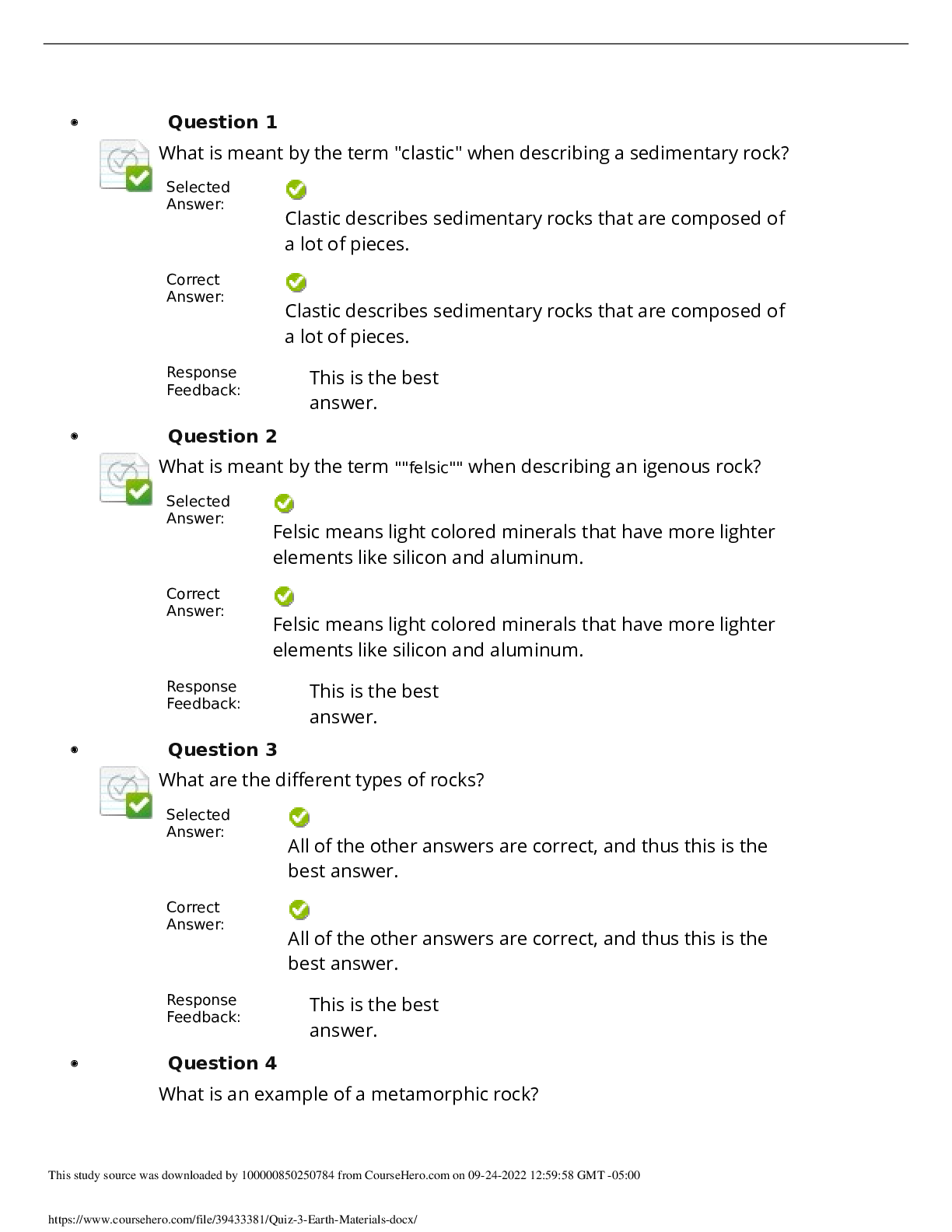Chemistry > QUESTIONS & ANSWERS > CHE 123 Intermolecular Forces Explanations_SOLUTIONS (All)
CHE 123 Intermolecular Forces Explanations_SOLUTIONS
Document Content and Description Below
Wesley College CHE 123 Intermolecular Forces Explanations_SOLUTIONS Intermolecular Forces Explanations Work through the following questions by answering the structured questions. At the end of the q... uestion, combine your responses to fully answer the overall question. Propanoic acid has a boiling point of 142.1 oC whereas propane has a boiling point of – 42 oC. Using your knowledge of intermolecular forces, explain this difference. The structures are shown below. Propane Propanoic acid Use the properties to identify the molecule with the stronger intermolecular forces Identify the strongest intermolecular forces in propane: Dispersion forces Identify the strongest intermolecular forces in propanoic acid. Hydrogen bonding Describe how the intermolecular forces lead to the higher boiling point. Put your answers together for an overall explanation Hydrofluoric acid (HF) is more viscous than hydrochloric acid (HCl). Use the properties to identify the molecule with the stronger intermolecular forces Hydrofluoric acid Identify the strongest intermolecular forces in HCl: dipole-dipole interactions Identify the strongest intermolecular forces in HF. Hydrogen bonds Describe how the intermolecular forces lead to the higher viscosity. Put your answers together for an overall explanation CCl4 and CF4 have different boiling points, 77 oC and -128 oC respectively. Use the properties to identify the molecule with the stronger intermolecular forces CCl4 Identify the strongest intermolecular forces in CCl4 : Dispersion forces Identify the strongest intermolecular forces in CF4. Dispersion forces Describe how the intermolecular forces are different and lead to the higher boiling point. Put your answers together for an overall explanation CH2F2 and CF4 have different boiling points, -52 oC and -128 oC respectively. Use the properties to identify the molecule with the stronger intermolecular forces CH2F2 Identify the strongest intermolecular forces in CH2F2 : dipole-dipole interactions Identify the strongest intermolecular forces in CF4. Dispersion forces Describe how the intermolecular forces lead to the higher boiling point. Put your answers together for an overall explanation Hydrogen sulfide (H2S) is less soluble in water than ammonia (NH3). Use the properties to identify the molecule with the stronger intermolecular forces Identify the strongest intermolecular forces in H2S : dipole-dipole Identify the strongest intermolecular forces in NH3: hydrogen bonds Describe how the intermolecular forces lead to the higher solubility in water. Put your answers together for an overall explanation Water has a higher boiling point than both ammonia and hydrofluoric acid. Use the properties to identify the molecule with the stronger intermolecular forces Water Identify the strongest intermolecular forces in Water : Hydrogen bonds Identify the strongest intermolecular forces in ammonia. Hydrogen bonds Identify the strongest intermolecular forces in HF. Hydrogen bonds Identify the number of intermolecular bonds that each compound can form. Describe how the intermolecular forces lead to the higher boiling point. Put your answers together for an overall explanation Butanol is a viscous liquid which boils at 117 oC, whereas diethyl ether boils at just above room temperature. The structures are shown below. Use the properties to identify the molecule with the stronger intermolecular forces Butanol Identify the strongest intermolecular forces in butanol : Hydrogen bonds Identify the strongest intermolecular forces in diethyl ether. Dipole-dipole interactions Describe how the intermolecular forces lead to the higher boiling point. Put your answers together for an overall explanation Nitrogen gas has a lower boiling point than oxygen gas. Use the properties to identify the molecule with the stronger intermolecular forces Identify the strongest intermolecular forces in nitrogen : Dispersion forces Identify the strongest intermolecular forces in oxygen. Dispersion forces Explain the difference in the strength of intermolecular bonds that each compound can form. Describe how the intermolecular forces lead to the higher boiling point. Put your answers together for an overall explanation Iodine (I2) has a melting point of 113 oC and methane has a melting point of -182 oC. Use the properties to identify the molecule with the stronger intermolecular forces Iodine Identify the strongest intermolecular forces in iodine : Dispersion forces Identify the strongest intermolecular forces in methane: Dispersion forces Explain the difference in the strength of intermolecular bonds that each compound can form. Describe how the intermolecular forces lead to the higher boiling point. Put your answers together for an overall explanation The parts of proteins that control the formation of alpha helices and beta pleated sheets occur between sections containing N-H bonds and C=O bonds. Identify the strongest type of intermolecular bonding. Explain why these structures will be disrupted when heated, rather than the covalent bonds that hold the protein together. The graph above shows the trend in hydrides for groups 14 to 17. Explain why there is an increase in boiling point for all groups from periods 3 to 5. Going from groups 3 to 5 the size of the molecule is increasing in all cases. As the size of the molecule is increased, there is an increase in the dispersion forces between the molecules. Increased dispersion forces require more energy to overcome these forces and separate the molecules leading to increasing boiling points. Explain why the boiling point decreases from periods 2 to 3 for groups 15, 16 and 17. Explain why the boiling point of CH4 is significantly lower than the other hydrides in period 2. Explain why the boiling point of H2O is higher than both HF and NH3. [Show More]
Last updated: 2 years ago
Preview 1 out of 7 pages

Buy this document to get the full access instantly
Instant Download Access after purchase
Buy NowInstant download
We Accept:

Reviews( 0 )
$6.00
Can't find what you want? Try our AI powered Search
Document information
Connected school, study & course
About the document
Uploaded On
Aug 18, 2022
Number of pages
7
Written in
Additional information
This document has been written for:
Uploaded
Aug 18, 2022
Downloads
0
Views
51

